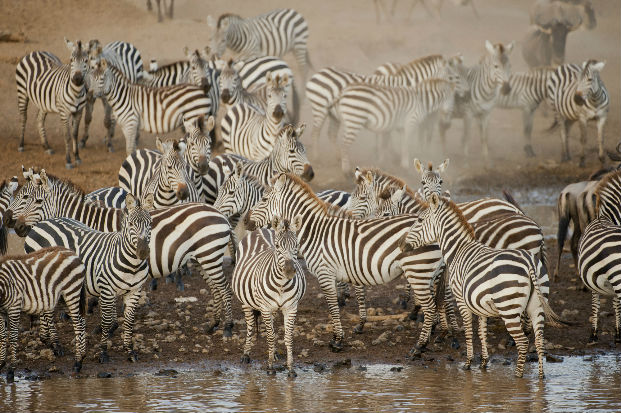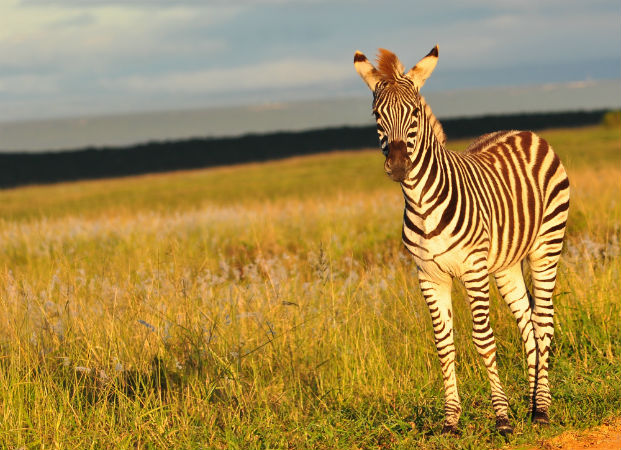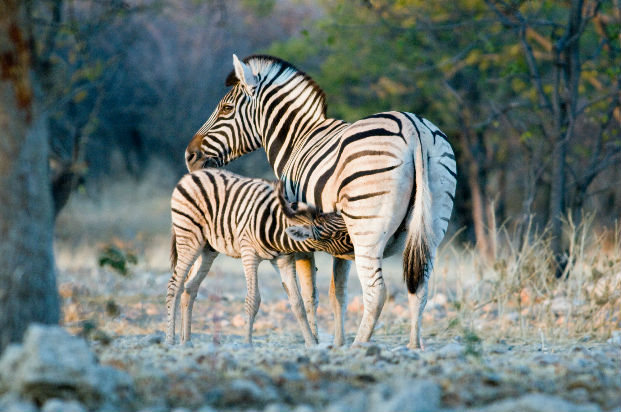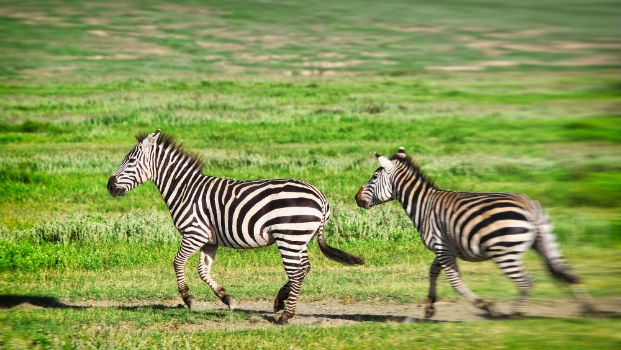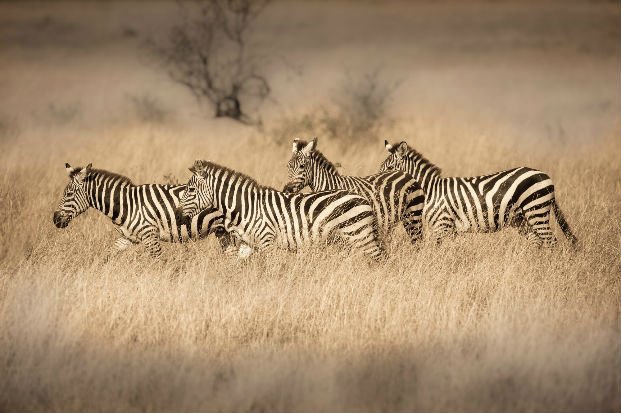There are three species of zebra: plains zebra (Equs quagga), mountain zebra (Equs Zebra) and grevy’s zebra (Equs grevyi). The quagga which became extinct in the 1900s was probably not a separate species but simply a sub species of the plains zebra.
The iconic high pitched “kwa-ha” alarm call of the plains zebra is synonymous with the African bush and is the origin of the scientific name, quagga. Zebras are unselective bulk feeders which means they can maintain good condition even when grazing is poor.
What sound does a zebra make?
The zebra makes a surprising amount of noise. They have 4 distinct sounds (bark, bray, snort, nicker). Further information on Zebra sounds are detailed by the Storyteller Travel in their post. Video length: 1 minute 41 seconds. Video source: Storyteller Travel.
Vote for the fact you find most fascinating
Zebras digest their food through fermentation in one large stomach. This causes a big build-up of gas which gives them a rotund appearance. This is the cause of flatulence when they run away from danger.
After birth a foal can be on its feet within 15 minutes, walking by half an hour and running in just 45 minutes.
In all zebras will sleep for seven hours, this includes a midday siesta and a sounder sleep during the night. For safety there is usually one member of the herd that remains vigilant. If a herd member is still sleeping after the alarm is raised other members will nudge them into action.
Zebras are fussy drinkers, so much so they are known to dig a small hole next to the main water source so that clean water will filter through.
A mother will chase away all other zebra from coming close to her new born until her own smell, stripe pattern and voice are recognised by and imprinted on the foal. A zebra’s stripe pattern is unique to that individual.
The hierarchy amongst mares within a harem matches the order in which they were abducted by the stallion. This can be seen when they queue up at a favoured rubbing post.
From the age of five, a stallion will leave the bachelor herd to start his own harem (up to six mares and subsequent young). He will abduct fillies that are in heat by challenging that harem’s stallion. This is a long drawn out process which could take as much as a year.


